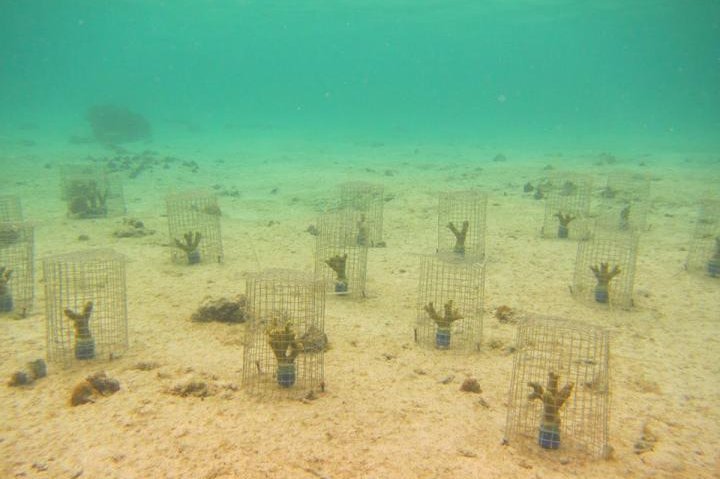Researchers monitored the impacts of the Coralliophila snail on Porites cylindrica corals. The presence of the snail can curb the growth of the typically hardy coral species. Photo by Cody Clements/Georgia Tech
July 26 (UPI) -- The last hope for degraded coral reefs is under attack. A new survey of Fiji Island reefs has revealed the significant damage being caused by small sea snails, previously ignored by marine biologists.
Scientists have dubbed the tiny snails "coral ticks" because they suck the fluid from young Porites cylindrica coral.
When researchers surveyed the impacts of coral ticks on Fiji reefs, they found snail infestations could curb Porites cylindrica growth by as much as 43 percent in a month.
Until now, scientists hadn't much noticed the tiny snails. They're small, colorless and don't move around much. They don't leave obvious marks on coral, and they're mostly only found on reefs that have already been severely damaged.
But even severely damaged reefs can be rehabilitated. Porites cylindrica is one the hardiest coral species and it plays an important role in the regrowth of shallow reefs -- that is if they can survive the onslaught of coral ticks.
"Once the reefs are down and nearly out, these snails are piling on," Mark Hay, a professor of biological sciences at Georgia Tech, said in a news release. "The Porites coral is kind of the last man standing, the last hope for some of these reefs coming back, and they are the ones these snails selectively prey on. As you get fewer and fewer corals, the snails focus on the fewer and fewer of these colonies that remain. This is part of the downward spiral of the reefs."
Because the snails are native, Hay and his colleagues wanted to find out why other natural predators weren't keeping them in check. They surmised overfishing might have something to do with. To test their hypothesis, researchers attached snails to coral colonies in protected waters and unprotected waters. Fishing is illegal in marine reserves and other types of protected areas.
After a week, the researchers returned to find the snails on the protected reef gone, as well as evidence that they were eaten by triggerfish. The coral ticks on the unprotected reef were still sucking away.
"From the predation evidence, it looked like the fish were eating the snails," said Georgia Tech postdoctoral fellow Cody Clements. "It seemed like the main element driving the difference was the protection status of the area where the snails were tethered."
Hay, Clements and their colleagues detailed the results of their survey this week in the journal Ecological Applications.
A lot of research into and reporting on the health of coral has focused on water temperature and CO2 concentrations, but as the latest research makes clear, the disruption of local ecosystems is as much a threat to coral reefs as marine heatwaves.
"Protecting coral reef areas and keeping food webs intact is really important to maintaining these communities," Hay said. "Overfishing takes a lot of key species out of the communities so that all you have left is the marine equivalent of cockroaches and dandelions. Taking out the fish takes away the functions the fish have been providing to the community."
Previous research has identified the importance of grazers to reef health, and some studies have even shown that disrupted ecosystems and food chains on adjacent islands can negatively impact reef health.















